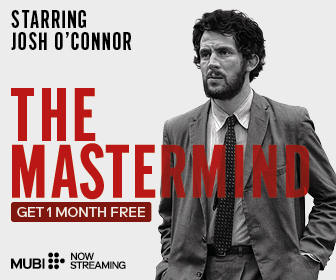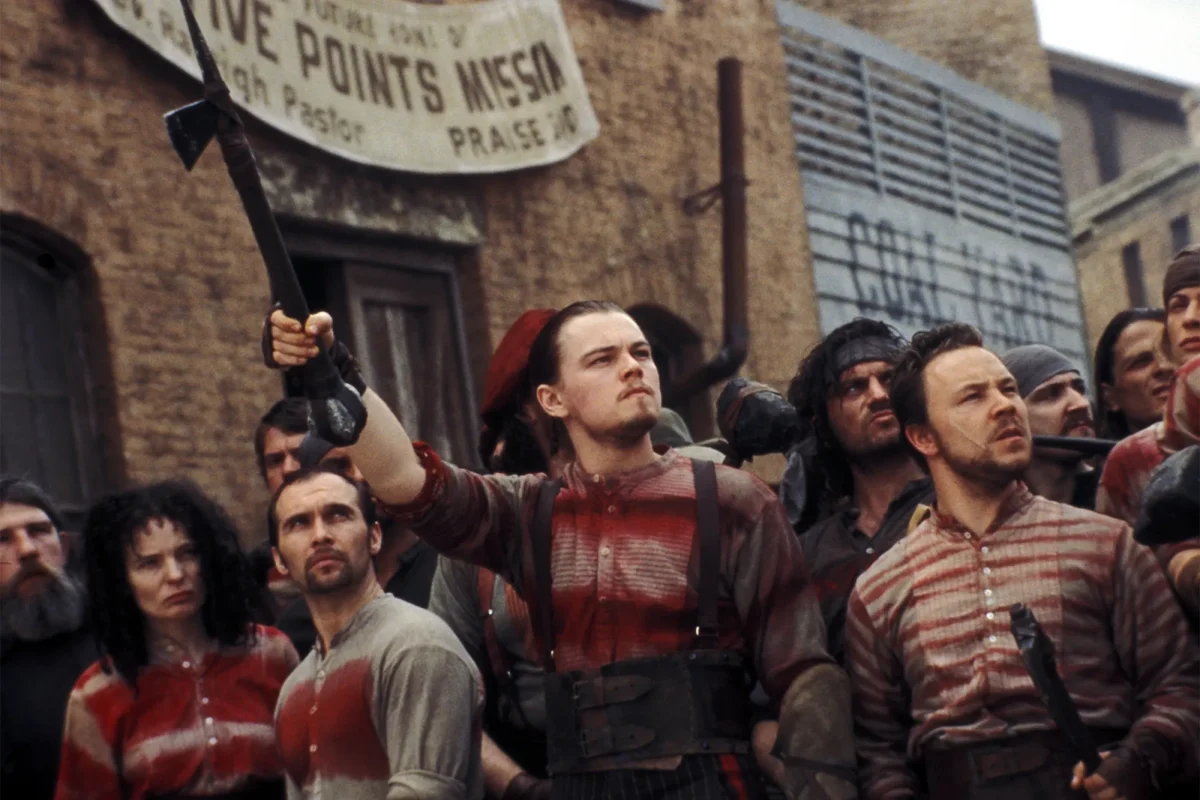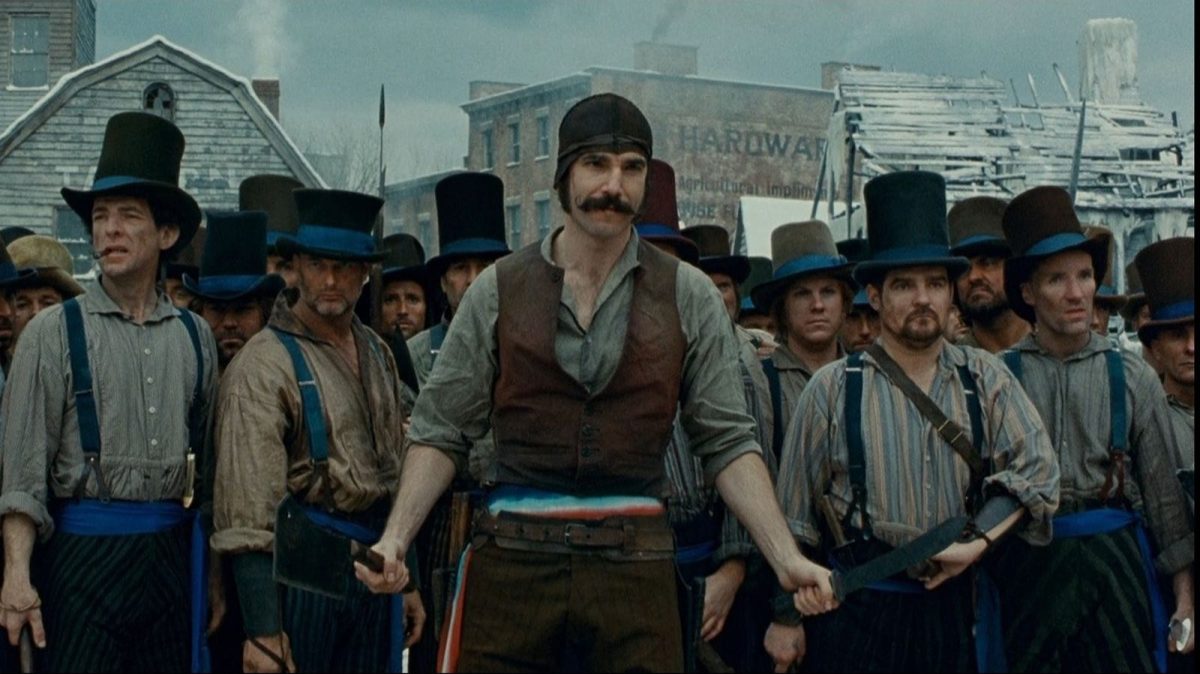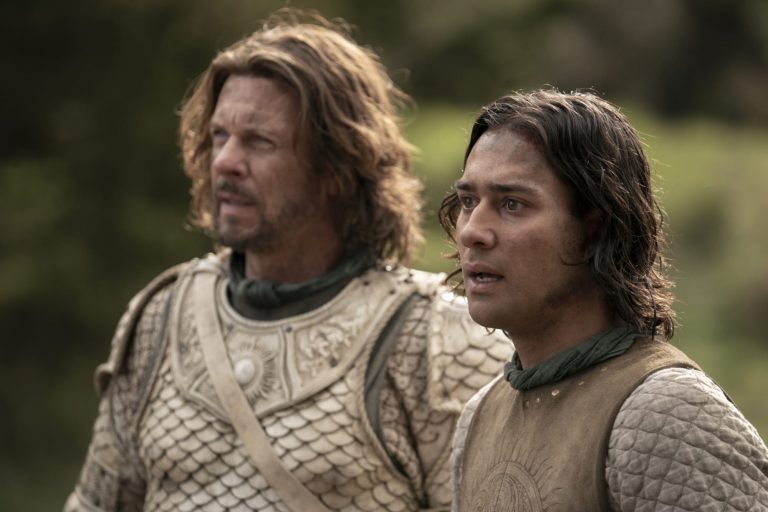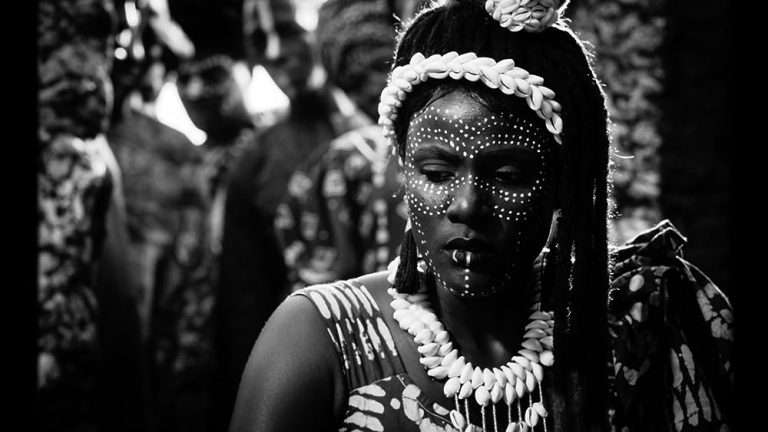Adolf Hitler, prior to his official association with the political movement that would later be termed ‘Nazism,’ wrote a controversial letter explaining his stance on the so-called ‘Jewish Question’. The letter, written on September 16, 1919, was addressed to a soldier named Adolf Gemlich, who had previously attended the army-sponsored “national thinking” course with Hitler.
In this letter, remembered today as the ‘Gemlich Letter’, Hitler clearly stated: “The ultimate goal must definitely be the removal of the Jews altogether.” The letter also clarified the fact that Hitler regarded the Jews as a race rather than a religious community, with his hatred emerging primarily from ethnic discrimination. This letter is historically significant for solidifying Hitler’s antisemitic ideas — ideas that would later echo in various forms of xenophobia across modern history and culture, including their cinematic representations, such as in “Gangs of New York.”
‘Antisemitism’ as an ideological phenomenon was not first conceived by Hitler or the Nazi Party. Rather, it had a long history of evolution spanning centuries. Judaism as a faith faced harsh criticism and antagonism from Hellenistic and Roman writers in Alexandria as early as the 3rd century BCE (often described as ‘Ancient Anti-Judaism’). Christian theology during late Antiquity and the early medieval period accused Jews of killing Jesus Christ, creating an atmosphere of hostility toward the Jewish community.
Followers of Judaism also faced economic discrimination and repeated ethnic as well as religious persecution even in the supposedly secular climate of the early Enlightenment period. All these phenomena became contributing factors behind the proliferation of antisemitism as an ideological stance in the nineteenth and subsequently twentieth-century Europe.
The mass genocide and systematic persecution of the Jewish population in German-occupied Europe during the Second World War, termed the ‘Holocaust,’ can be seen as a manifestation of the generational transmission of antisemitic ideas. Hence, Hitler (along with his Nazi Party) should not be perceived as an isolated entity but rather as an individual infected by the age-old venom of antisemitism.
This long history of xenophobic hatred is not confined to one community or one period alone. It reverberates through different contexts — from Europe’s antisemitism to the anti-immigrant hostility that shaped the 19th-century American urban landscape. One of the most striking cinematic portrayals of such hostility can be seen in Martin Scorsese’s “Gangs of New York”, which dramatizes the tensions between native-born Americans and Irish immigrants in the Five Points district of Manhattan. By examining this film, we can understand how xenophobia, as both a historical and psychological phenomenon, continues to shape collective identities and fuel conflicts.
Now, antisemitism as an ideological discourse can be described as a tributary of the wider concept of ‘Xenophobia’. Other similar historical specimens of discrimination, like the infamous Apartheid regime of South Africa or the rise of Islamophobia in the Western world, especially in the 21st century, are also significant examples of the same phenomenon. In this essay, I will be discussing the historical development of xenophobia, its socio-cultural impact, and thematic representation in contemporary cinema. My focus will be on Scorsese’s “Gangs of New York” as a cinematic text that powerfully depicts xenophobic sentiment in 19th-century America.
Why Xenophobia Still Matters Today?
Viewed through the lens of etymology, the term “xenophobia” is a composite word formed from the amalgamation of two ancient Greek roots: ‘xenos’, meaning foreign or alien, and ‘phóbos’, meaning fear. So, it can be simplistically explained as a sense of fear related to something that is outside one’s notion of normalcy and regularity, something unfamiliar, something strange, something different. It travels far beyond its literal meaning to become a threat to equality and cosmopolitanism.
The term ‘xenophobia’ was presumably coined in the 1880s and gained prominence, especially in French newspapers, in the 1900s. It is intimately connected to the sociological concept of ‘in-group’ and ‘out-group’ developed by William Sumner in the early years of the twentieth century and further popularised by Henri Tajfel and John Turner through their seminal ‘Social Identity Theory’ in the 1970s.
This binary categorization is dependent on the dual sense of identity and belonging. An ‘in-group’ is simply a social group (based on gender, class, caste, ethnicity, or religion) that an individual identifies with, creating a sense of familiarity. An ‘out-group’ is precisely the opposite, where the sense of belonging is absent. This distinction gives rise to social and cultural otherization, where the so-called ‘foreign’ entities are discriminated against and alienated. This often grows out of an aspiration for cultural homogenization, restricting any kind of heterogeneity.
Read: The 10 Best Leonardo DiCaprio Movie Performances
Over time, xenophobia has developed into prejudice against people who are not native to a particular piece of land and are therefore regarded as outsiders. This prejudice arises from deep-rooted feelings of hatred and fear, escalating tension among communities. This feeling of hatred is often related to the idea of ‘insecurity’, where the foreign communities are considered socio-political, cultural, and economic threats to the existence of the native communities.
Over the years, xenophobic mentality has had a considerable impact on global politics and international relations. Exclusion of certain communities based on their beliefs and customs, deprecatory behavior towards immigrants, irrational ostracization of individuals based on their religious, ethnic, or gender identity, all these instances can be categorized as diverse manifestations of xenophobia. This gives rise to hate crimes ranging from cases of microaggression to organized violence. It also contributes to the erosion of social cohesion and creates an atmosphere of distrust among communities.
Its relevance has not withered with time. In the recent past, we observed immense discrimination and animosity against people from Asia, particularly Southeast Asian descent, during the COVID-19 pandemic. A specific geographic region was marked and blamed for the transmission of the virus based on media-circulated rumors without any logical or rational justification. This example substantiates the fact that xenophobia is still a reality in the postmodern world of scientific innovation and extraordinary possibilities, maybe in altered, more latent forms.
Okay, so now it’s time to talk about how xenophobia is shown in “Gangs of New York” by Martin Scorsese. But before I get into that part, I should probably explain a little bit about what the movie is about and the world where everything happens. It’ll make more sense that way.
“Inside ‘Gangs of New York’: Its World, Conflicts, and Meaning:
“Gangs of New York” (2002) is significant for being Martin Scorsese’s first-ever collaboration with his long-time creative partner, Leonardo DiCaprio, but it is even more significant for depicting a story of immense socio-political relevance. This historical crime drama set in the vicious Five Point district of Manhattan (during the nineteenth century) revolves around the conflict between two feuding gangs: the American Nativists and the Irish Immigrants. It follows the story of Amsterdam Vallon, played convincingly by DiCaprio, who returns to the brutal land after several years to avenge the death of his father by the ruthless anti-immigrant gang.
The menacing antagonist, William Cutting (infamously called Bill the Butcher), played by the spectacular Daniel Day-Lewis, remains the most memorable element of the entire film. The film opens in the year 1846, where we encounter a brutal battle between the Irish immigrant gang called ‘Dead Rabbits’ led by “Priest” Vallon (the father of the protagonist) and the Nativist gang led by Bill the Butcher. The priest is mercilessly slain by Bill the Butcher during the bloody gang war, as his young son remains a passive observer, numb in utter helplessness. This short yet impactful prologue catalyzes the events unfolding throughout the remaining length of this epic revenge saga. The basic point of conflict here is the enmity between the two communities.
This enmity primarily grows out of ethnic distinction. The nativists consider themselves as the only sovereign, legitimate inhabitants of the land and seek to maintain undisputed dominance and monopoly. They are shown observing the Irish immigrants as outsiders and foreign elements. The Nativists continuously oppress the immigrant population, and the Irish community retaliates by creating their own gang as a weapon of resistance against suppression and atrocities.
The conflict between the two groups is not solely dependent on ethnicity, though; religion becomes another important factor of difference. The American Nativist population is dominantly Protestant, and the Irish immigrants, on the other hand, are adherents of Catholicism. Hence, it no longer remains a unidimensional ethnic conflict but takes on the dimension of religious polarity between two conflicting denominations of Christianity: Catholicism and Protestantism. This denominational divide fuels a conflict of faith that further intensifies the ethnic dispute. The film beautifully encapsulates themes of identity, honor, loss, sacrifice, revenge, societal discrimination, sectarianism, immigrant experience, and more. Above all, it is an enthralling commentary on the cyclical nature of violence.
Must Read: 10 Best Daniel Day-Lewis Performances
The film is also heavy in symbolism. Blood remains a constant symbol of sacrifice and lineage. Fire and smoke in several sequences become symbols of chaos, destruction, but also rejuvenation. There are several religious symbols scattered throughout the film, adding layers of meaning to its central conflict.
One of the most striking is Bill the Butcher’s glass eye, which bears the image of a hawk—or another predatory bird. This detail mirrors his own predatory nature and ruthless dominance. His physical blindness on one side also works as a metaphor, pointing to his moral blindness and inability to see beyond hatred. Meanwhile, the protagonist and the antagonist embody the two opposing factions at the heart of the story, standing as living symbols of two clashing identities: the immigrant and the native.
Xenophobia at the Heart of ‘Gangs of New York’
The theme of xenophobia forms the basic foundation of the film. Here, the native population feels threatened by the presence of the foreign community, the Irish immigrants. An intense, unreasonable hatred emerges out of this sense of fear. The American nativist gang and their atrocious behavior are mainly fueled by their anti-immigrant emotions and otherization of the Irish community. They fail to create an atmosphere of inclusivity, refusing to consider the Irish immigrants as an extended part of their society.
The Irish community is consciously dehumanized and socially marginalized, which becomes clear from the very first sequence. Several dialogues by the American native characters in the film reflect this xenophobic thought process. The native population shows animosity and disapproval toward the Catholic Irish immigrants, with many of their dialogues reflecting intolerance, disdain, a sense of resentment, and a perceived violation of their territorial belonging. Their aggressive patriotism, jingoistic dogmatism, and sense of ethnic superiority give rise to a violent conflict.
Gangs of New York offers a striking and credible glimpse into the social and political tensions of nineteenth-century America, even while taking some creative liberties. It captures how immigrant communities arriving from distant lands in search of a new life were met with hostility and resistance from the native population. This backlash, driven by a deeply ingrained xenophobic mindset, left immigrants socially excluded and branded as outsiders.
The hostility depicted in the film isn’t limited to ethnic or religious differences alone—it is also rooted in a sense of political unease and economic insecurity. The rapid influx of Irish immigrants created fears among the native population about losing their jobs, power, and cultural dominance, further intensifying the divide between the two communities.
A tension was created among the native population due to the rapid influx of Irish immigrants, most of whom arrived poverty-stricken. This gave rise to a more intense competition for employment in an already economically declining society. All these elements feature in the film without overpowering the primary revenge plot. The film is set in the historical timeline of the American Civil War. It sheds light on the defiance of the Irish immigrants against the conscription threat during the Civil War. It also outlines the rapid industrialisation of New York and the stark socio-economic disparities of the nineteenth century, which were further amplified by the war.
The theme of xenophobia and ethnic hatred really comes through in the character of Bill the Butcher, who almost feels like the living embodiment of these ideas. But it’s not as simple as saying he’s “just the bad guy.” Bill, based on the real historical figure William Poole, isn’t acting in a vacuum—he represents the widespread xenophobic attitude of 19th-century American society. He’s not a one-dimensional villain; he’s a product of his environment, shaped by the hatred around him, and in a way, also trapped by it. Just like Hitler, whom I mentioned earlier, Bill’s cruelty can be seen as the result of generations of ethnic tension and prejudice.
Despite being ranked by some as one of the lesser films in Scorsese’s career, “Gangs of New York” stands out for its bold and unflinching portrayal of xenophobia. Scorsese brings this theme to life within a commercial, visually rich setting without ever losing the story’s core intensity. The film doesn’t treat xenophobia as an isolated idea—it shows it as a driving force in American history, fueling social division, discrimination, and the cycles of conflict that shape communities.

